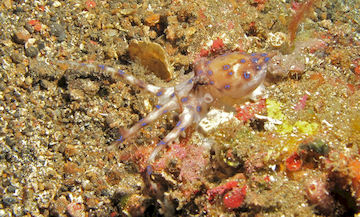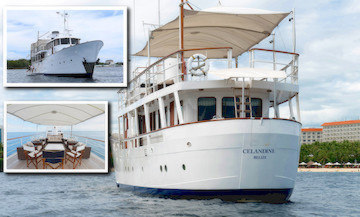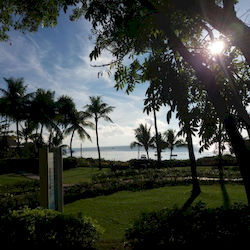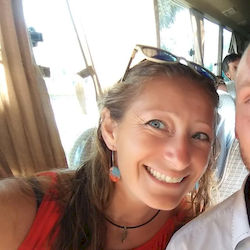The Blue-Ringed Octopus: One of the most deadliest marine animals
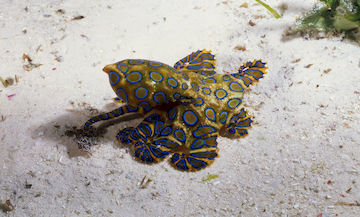 The Blue-ringed Octopus, nicknamed as the BRO, is one of the ocean's most lethal but fascinating creatures. As the name denotes, it is known for its bright blue rings that appear when threatened.
The Blue-ringed Octopus, nicknamed as the BRO, is one of the ocean's most lethal but fascinating creatures. As the name denotes, it is known for its bright blue rings that appear when threatened.
Like any other octopuses, it has eight tentacles and a sac-like body. The blue-ringed octopus is known as one of the world's most venomous marine animals.
But no need to panic, the blue-ringed octopus is not aggressive! It only attacks humans when it feels in danger, like if you are trying to corner a blue-ringed octopus it might become aggressive and attack.
How Deadly is the Blue-Ringed Octopus?
Aside from its bright blue rings, the blue-ringed octopus is also known for their potent toxin used for hunting and attacking when sensing danger. This small mollusk (it is only about the size of a human hand for the biggests!) is packed with two types of toxins, one for hunting and the other for self-defense.
The blue-ringed octopus ejects Tetrodoxin, a harmful toxin that could paralyze and kill a human adult in mere minutes (it is 1,200 times more toxic than cyanide). It is the same toxin that the pufferfish and cone snails have. The toxin is produced by the bacteria found in its salivary glands and not by the blue-ringed octopus itself. One milligram of it can kill a person. An average sized blue-ringed octopod has enough venom to kill 26 full-grown adults. What's worse is that there is no known antidote! So keep your distance when you see one.
The second type of toxin it has is used to kill its prey. This venom is harmless to humans, but it is toxic enough to paralyze and eventually kill crabs and other crustaceans. The blue-ringed octopus bites through the exoskeleton of its prey and releases the venom to poison it before consuming. This octopus hunts at night, and they are also known for cannibalistic behaviors when fighting for territorial rights.
The Blue Ringed Octopus Bite
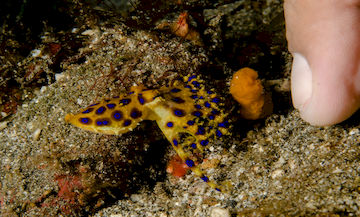 The bite of a Blue-ringed octopus is often described as painless, that leaves a small bite mark and causes as little as two drops of blood. However, the venom quickly takes effect, and in a few minutes, the victim will experience nausea, dizziness, severe fatigue, vomiting, numbness, loss of senses, loss of motor skills, difficulty in breathing and swallowing, and increased heart-rate.
The bite of a Blue-ringed octopus is often described as painless, that leaves a small bite mark and causes as little as two drops of blood. However, the venom quickly takes effect, and in a few minutes, the victim will experience nausea, dizziness, severe fatigue, vomiting, numbness, loss of senses, loss of motor skills, difficulty in breathing and swallowing, and increased heart-rate.
If bitten, one should seek medical care immediately. Victims can still recover if artificial respiration is initiated right away. After about 15 hours, the muscles will start working again. People who usually survive the first 24 hours make a complete recovery.
But don't worry, death from the venom of a blue-ringed octopus is not as common as you think. There were only three reported deaths caused by it, one in Singapore and two in Australia. The blue-ringed octopus is also not aggressive. It only attacks humans when handled or cornered. Nevertheless, you should always be mindful of where you step on rocky shores and when swimming in shallow waters, scuba diving, or snorkeling. Their horny beak is strong enough to penetrate through a wetsuit.
Blue-Ringed Octopus Life and Reproduction
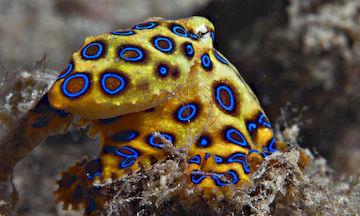 There are only four known species of the blue-ringed octopus, with Southern Blue-Ringed Octopus (Hapalochlaena maculosa) being the most common. The lifespan of a blue ringed octopus is approximately one to two years.
There are only four known species of the blue-ringed octopus, with Southern Blue-Ringed Octopus (Hapalochlaena maculosa) being the most common. The lifespan of a blue ringed octopus is approximately one to two years.
During reproduction, the male clutch onto the female, sometimes obscuring her vision. The male octopus then inserts his hectocotylus (the arm used to transfer spermatophore) into the female repeatedly.
The male dies after reproduction while the female only lay a single clutch of around 50 to 100 eggs for about six months. At this time, the mother octopus does not eat while incubating and guarding the eggs with her life. When the eggs hatch, the female dies because of starvation. Juvenile blue-ringed octopuses are as small as a pea, and they mature quickly for a year.
Where do the Blue-ringed Octopus Live?
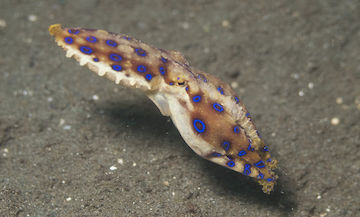 They often dwell in the temperate waters of Australia, Indonesia, New Guinea, Malaysia, Japan, and the Philippines.
They often dwell in the temperate waters of Australia, Indonesia, New Guinea, Malaysia, Japan, and the Philippines.
If you want to spot this cute but deadly animal on your dive in the Philippines, you can look for them at dive sites in Anilao, Puerto Galera in Luzon, Dauin, Leyte, Bohol and Cebu in the Visayas. They like to stay in shallow reefs and tidal pools, often hiding in cracks, crevices, and sandy bottoms.
Mactan Island coast line facing Olango Island is also well known for its blue-ringed octopuses. You can easily find them along Mactan island, as well as around Olango Island.
Blue-ringed Octopus Researches and References
All pictures used for this article are courtesy of Wikimedia Commons, Ajith Kumar, Saspotato and Carmel Vernia.
If you want to know more about Blue-ringed Octopuses, take a look at some of our references below.
- Blue-ringed Octopus
- 7 facts about blue-ringed octopus
- Small but Deadly
- Blue-ringed Octopus
- 5 facts about blue-ringed octopus
- Blue ringed Octopus Facts
- Blue-ringed Octopus
- Blue-ringed Octopus
Speaking about octopuses, do you know how do octopuses camouflage?
Last, but not Least
If you would like to receive interesting content like this in your email Inbox, subscribe to our newsletter.
In addition to our monthly newsletter, we will send you our weekly e-Bulletin with one fascinating topic, like today. There will be no advertising or sales pitch.
We also want to thank YouTube for the amazing videos on this page.
Thanks for reading, and if you wish, see you next week!
The Research and Media Team at Scotty's.
Disclaimer: The views, ideas, and opinions expressed by the writers of Scotty's Media team do not necessarily reflect or represent the views, ideas, and opinions of the company, Scotty's Action Sports Network, Inc.
More Pictures of the blue-ringed octopus
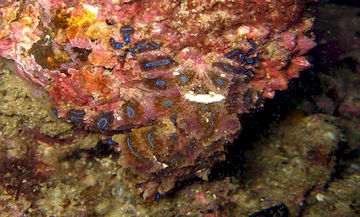
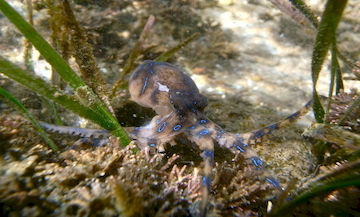

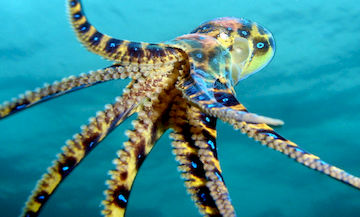


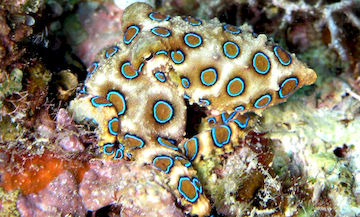
_320.jpg)

